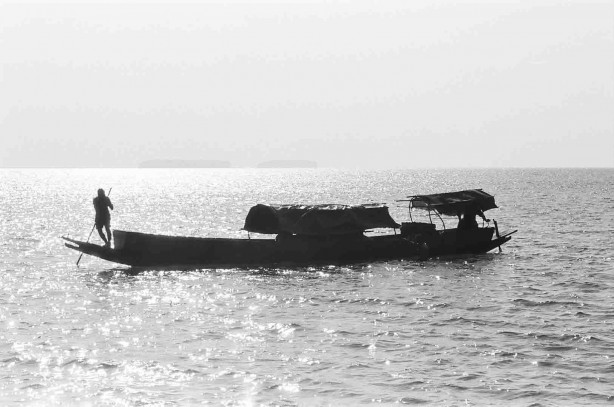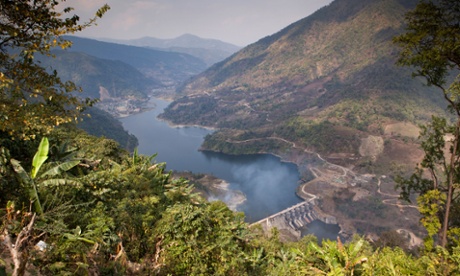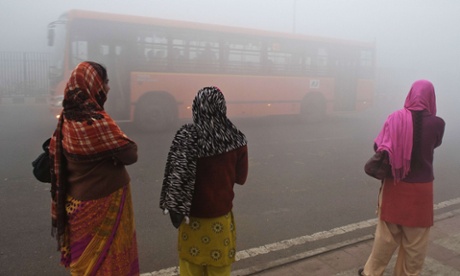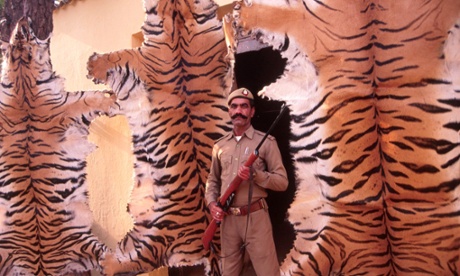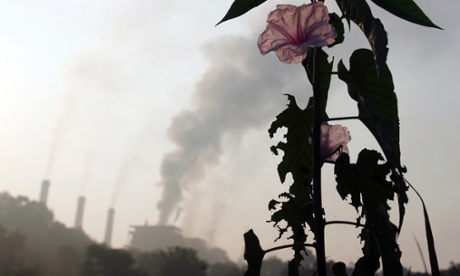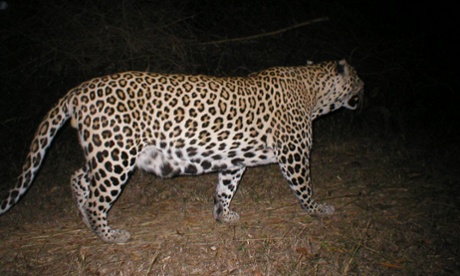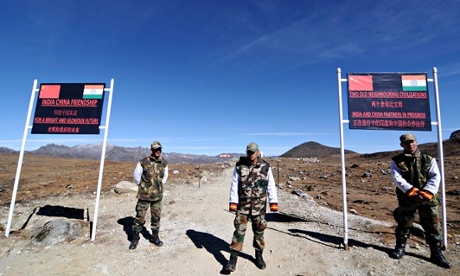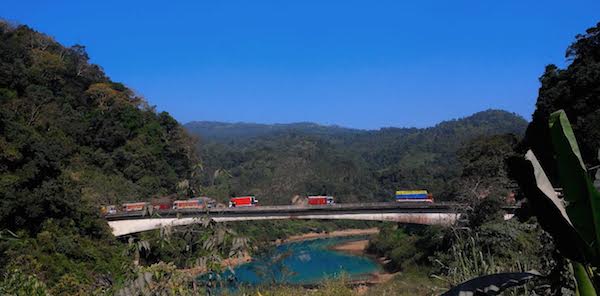Published in Outlook Traveller LUXE January2014
Sonny guided the inflatable kayak across the expansive Phang Nga Bay, Phuket, towards an immense rock. At the waterline, I could see skylight on the other side of a small tunnel, and we sped straight for it. Sonny commanded, “Lie back,” and I obeyed his order, holding my hands against my body. Had my arm snagged, the sharp-edged, rough wall would have skinned it. The tunnel, just wider than the kayak, was a portal to another dimension.
We emerged from the dark cave into an open-air pond, with cycads, bamboo, grasses, and fig trees growing on the enormous wall encircling us. Unseen birds occasionally chirped high up on the rocky cliff, breaking the eerie silence. Sonny explained how these open-to-the-sky tidal pools were created.
Over millennia, rainwater collected in puddles on top of these limestone rocks and ate away the cores, hollowing out the islets. Sea water eroded the rocks from outside at the waterline. Where the walls were especially thin, caves formed allowing the sea to enter the hollow islets. Many of these sea caves called ‘hongs,’ meaning rooms, were open at low tide, and we couldn’t get too carried away by the beauty. We had to scoot out before the tide came in or be trapped for six hours until the next low tide.
“Has that ever happened?” I asked Sonny.
“No. But we’ve been in some tight situations.”
A troop of well-camouflaged crab-eating macaques or swamp monkeys sat patiently on rocks, waiting for hand-outs. Our group of kayakers was the last of the day’s visitors.
When John Gray, the man who put these sea caves on the tourist map, paddled by, I asked him, “How many people visit these caves?”
“About 4,000 to 5,000 a day.”
That’s not surprising, since these hongs in Phang Nga Bay were only an hour’s boat ride from bustling Phuket. More and more kayaks entered the hong and noise levels rose; I was happy to go back to the bay.
The tide was rising and the tunnel seemed narrower on the way out. “How do you get rotund guests through that?” I asked Sonny.
“We let some air out of the kayak so we ride lower and the belly gets through.” He cackled with laughter, obviously remembering a particularly round beer gut’s close shave.
Dramatic limestone rocks with green vegetation cascading from the top rose out of the blue bay. Each had eroded in interesting and unique ways; some had arches, while others looked like they had been nibbled by giant rats. We entered another hong with a huge portal, a bat roost, and we comfortably paddled without risking skinned elbows.
The flotilla of lemon-coloured kayaks headed back to the mother boat. While waiting for nightfall, Sonny and the other guides taught us tourists to make orchid-decorated, banana pith floats called krathongs. Thais celebrate Loi Krathong, when we observe Karthikai Deepam in south India and Kartik Purnima in the north, once a year on a full moon night in mid-November. They set adrift their past sins and bad luck in the krathongs and as an offering to the river. But every tourist on the ‘Hong by Starlight’ tour celebrated it, no matter the time of year or moon phase. Shorn of its cultural context, it was a corny exercise I thought.
A chorus of loud shrieks rent the air. Brahminy kites swooped down in the boat’s wake, snatching up chicken necks the cook chucked into the water. John said, “I don’t condone feeding wildlife; I don’t feed monkeys. But visiting ornithologists told me feeding raptors is okay.” By the time the last morsel was picked out of the waters and the kites went back to riding the thermals high in the sky, all the krathongs were made.
At sunset, we anchored near a tall rocky islet where we’d float the krathongs after nightfall. Black clouds spluttering lightning bolts, like colossal live fire opals, sped our way, and within minutes, a demonic rain god embraced us. Lightning crashed around the boat, thunder reverberated, and the rain drummed loudly on the boat’s roof. John commanded the craft move closer to the rock, explaining, “If we stick close to it, the lightning is likely to spare the boat.”
The weather forecast indicated thunderstorms for the week, but the cloudless, sunny days had fooled everybody. With nothing to do, I helped myself to more stir-fried tofu. I resolved yet again to run the next morning, weather willing. I overate at every meal, and the blame lay squarely with the scrumptious Thai cuisine.
I had all the encouragement to run. Westin Siray Bay Resort and Spa’s ‘running concierge’ would run with me and point out any scenic or cultural sites along a pre-charted route. I can’t say how this unique concept works; not even the incentive of complimentary New Balance footwear could stir me out of my Heavenly Bed®, the hotel chain’s hallmark of customized comfort.
The 250-plus-room resort was arrayed along a hillslope above the lobby, and a cool sea breeze blew from Siray Bay. Every room had an unhindered view of the sea. Locally-crafted, long-tail wooden boats, ferries, and speedboats plied the waters. On a distant hill, the 45-metre-tall marble statue called the Big Buddha glowed white in the morning sun.
The beach below the resort was just a fringe of sand, disappointing for sun-worshippers. The bay was so sheltered, there was no breeze to get the windsurfers moving. But what Westin lacked in beaches, it made up in views and location. Although the resort was on the far and quieter side of the island from touristy Patong, I had to travel a mere eight kilometres to reach Phuket town.
I walked into a splendidly restored colonial building that housed the Blue Elephant restaurant on Krabi Road. Tony Bish, the Texan-Phuketian chef, led a group of us, novices at Thai cooking, to the kitchen garden to pick fresh betel leaves to make crab curry. We sampled basil and lemongrass, examined the round, white Thai eggplant, and regarded the many kinds of chillies with respect.
At the culinary school, in the rear of the restaurant, every student had a stove, implements, and an array of ingredients. Following Tony’s example, we each made our own crab curry. While he liberally threw five blood red bird’s eye chillies into the mortar, I conservatively used only one. Proud of making my first Thai dish, I tasted a large spoonful of it, and recoiled from the lone chilli’s heat.
Over a sumptuous lunch fit for royalty, Kim Steppé, the affable Belgian-Phuketian general manager of the restaurant, quipped, “Phuket town is the soul of the island and Patong is its heartbeat.”
“What’s Siray?” I asked.
“It’s the site of the first human settlement on the island. The sea gypsies were the first to settle here.”
The Moken sea gypsy settlement was visible from the resort’s lobby. In times past, the community was nomadic, living at sea for months. Even though the gypsies were the original settlers, they weren’t accepted as Thai nationals.
I wandered through the hamlet. Women, some with babies cradled on their laps, sat cross-legged in groups on low bamboo platforms, chatting and preparing food. The older ladies wore traditional sarongs and blouses, while the younger ones wore capris and t-shirts. The elderly slept in the shade, oblivious of noisy kids racing down the street. The Moken looked more Polynesian than Thai, and they rarely looked up at me. If our eyes met, they shyly looked away.
Under a large tree by the waters’ edge, three men were making what looked like cages. Between the rattan and thin hardwood mangrove struts, the men’s hands blurred as they wove bobbins of wire back and forth, twist, back and forth, twist in a chain link pattern. I walked around a cage examining its construction. The wall of one side caved into a funnel, the jagged wires sticking out like teeth. It was a fish trap. Although it seemed light in construction, I wondered how the fishermen hoisted a full trap out of the water. I knew no Thai and they knew no English, so I only had recourse to my imagination.
After lunch, I met tour guide Nantawan Kosai, who preferred to be called Jennifer Lopez. A group of us set off from Blue Elephant, following and hanging on her every word as she led us down Thalang Road. Although Phuket seemed to have sprung to life in recent years as a tourist spot, it had a flourishing tin mining industry for more than a century.
Many Chinese barons built ornate mansions like the Blue Elephant, but most preferred to live in shop-houses. Business was conducted downstairs, and living quarters upstairs. Porches of these row houses connected to form an arcaded walkway called five-foot-way. Built in the Sino-Portuguese style adapted from Penang, the buildings had spacious rooms, ceramic floor tiles, European-style stucco ornamentation, central courtyards called chimcha, and front doors adorned with Chinese motifs.
Jennifer said the narrow boutique shop-lined alley Soi Romanee used to house the ladies of the night. But with this curious twist in custom: Every evening, the women gathered in the balconies and picked their choice from the parade of men walking below. One rich businessman, who made his lonely way home unconsummated for four consecutive evenings, apparently committed suicide.
There was much to see and savour of Phuket’s history, but we were rushed for time. We hurried through an amulet market where I found a shivaling carved in graphic detail, a colourful Chinese Taoist temple, and Phuket Thai Hua Museum (formerly a school for Chinese children). Jennifer shepherded us into a blue mini bus locally called po-tong.
We arrived at the top of Khao Rang hill just as the sun disappeared over the horizon. At the popular Tung-ka Cafe, Jennifer ordered a round of Kopichamp, Phuket’s unique blended beverage of coffee and tea. It sounded vile, but if Jennifer was so proud of it, it was worth a try. It was cold coffee with an aftertaste of tea, and surprisingly good and refreshing at the end of a long walk.
I manoeuvred my way along the crowded wooden viewing deck to see the city lights spread out below. No matter how unplanned and messy a city looks by day, it is always pretty by night, and Phuket was no exception.
*********
Fed up of waiting for the rain to ease, Sonny distributed disposable plastic ponchos. Many guests said they didn’t want to risk their lives going out among striking lightning bolts. With the krathongs tucked underneath the ponchos to keep the candles dry, some of us kayaked away from the boat.
Lightning lit up the landscape for an instant, and the monochromatic bluish image registered in my mind like a photograph. With head lamps aglow, the kayak guides navigated into a large cave. Every paddle swish made the water sparkle with emerald-green stars: self-illuminating plankton.
The cave was still and quiet as we solemnly lit the candles on the krathongs. Sonny’s voice echoed, “Make a wish when you let them go.” I was too dumbstruck by the beauty and drama of the scene to think of a wish. It felt good to just be. The walls of the cave flickered in candlelight, and our shadows swirled around as the jewel-like krathongs drifted away gently into the hong.
Despite my earlier misgivings about celebrating Loi Krathong out of season, it was truly a magical experience. The spectacular storm gave the faux light festival a new context, one I could make my own.






